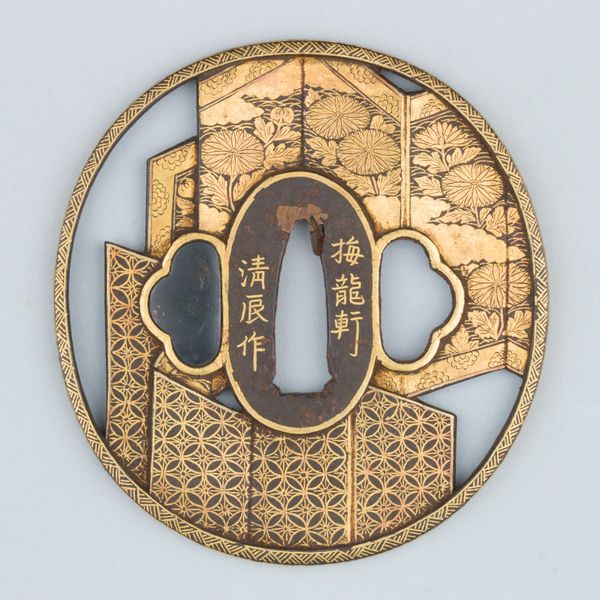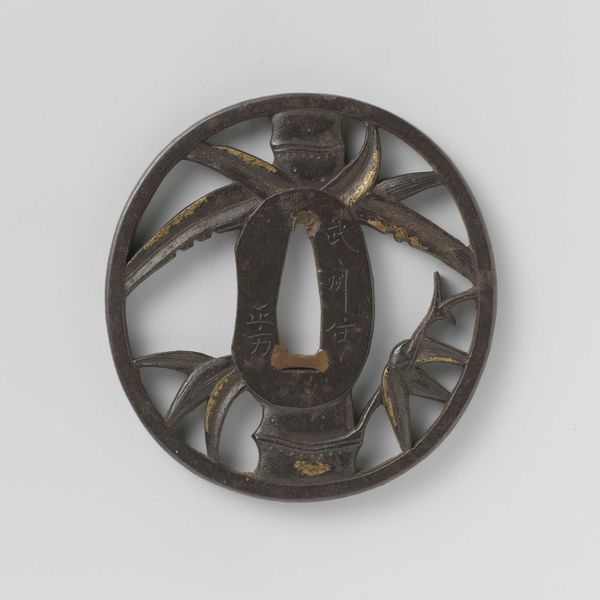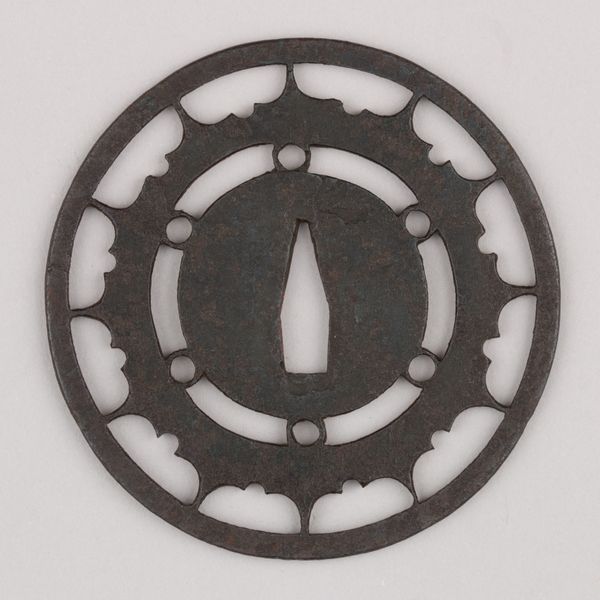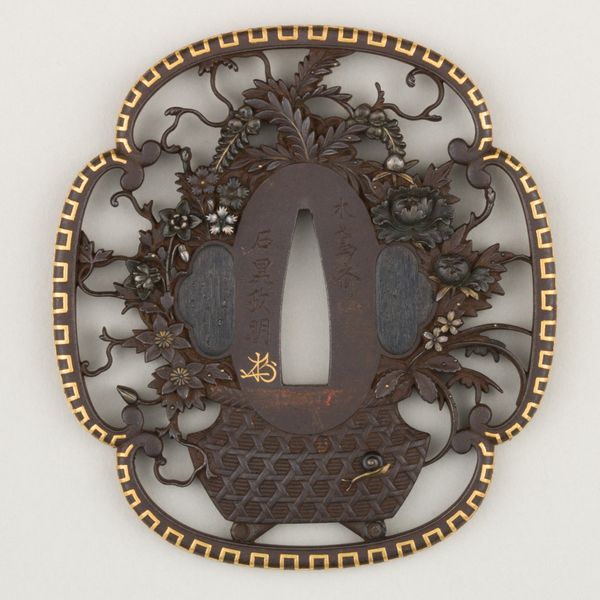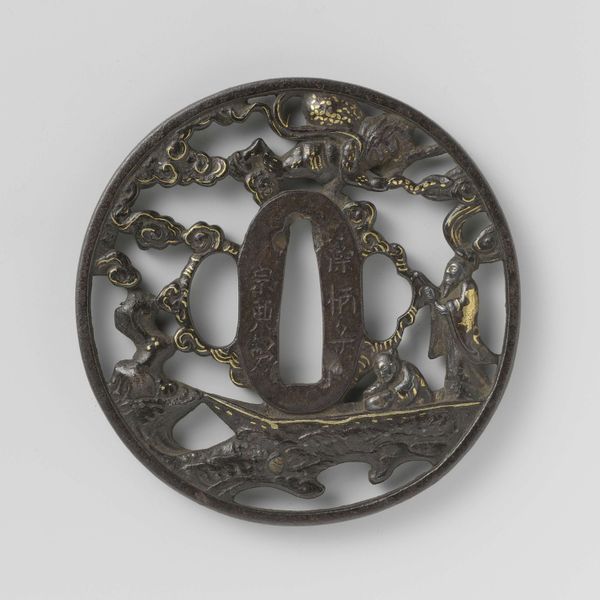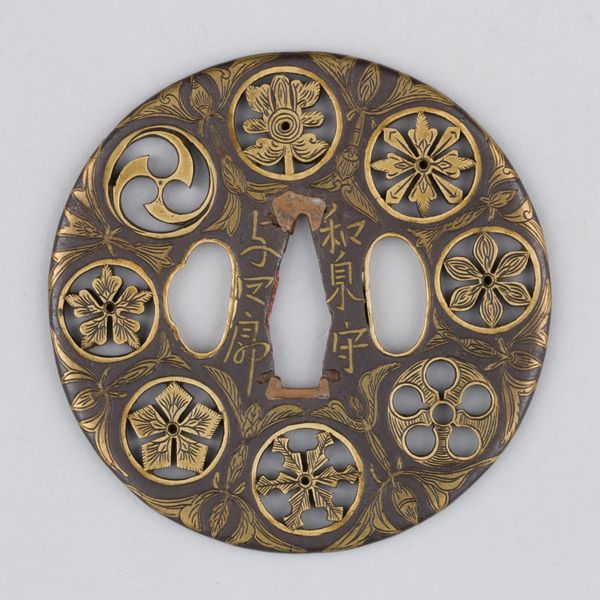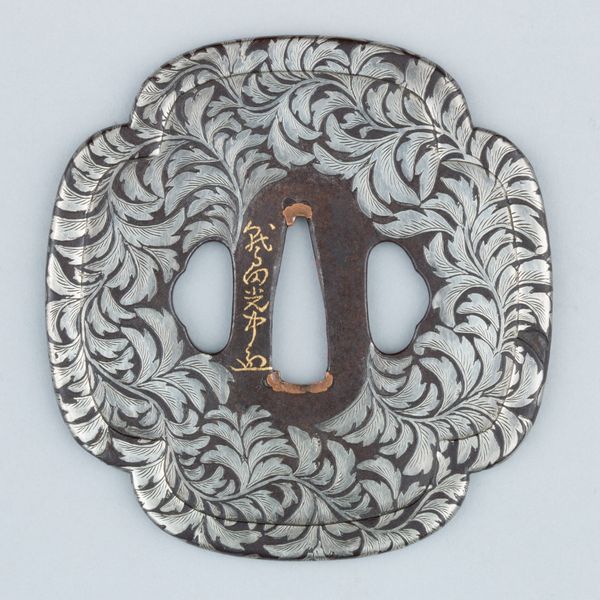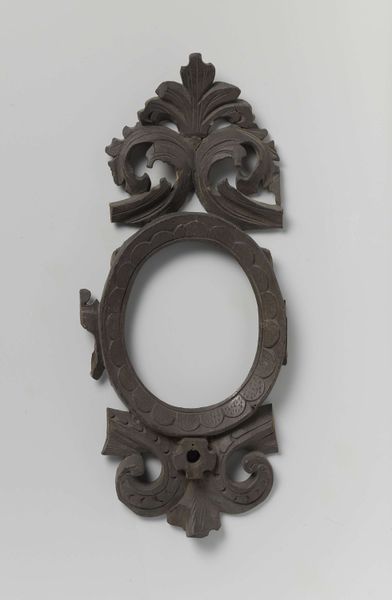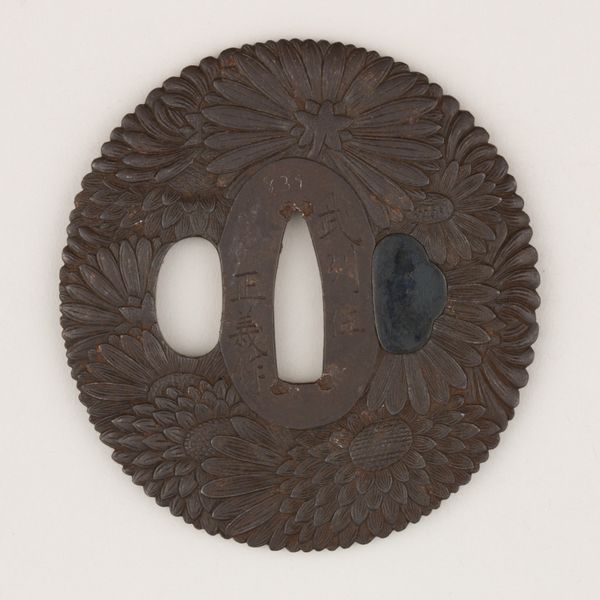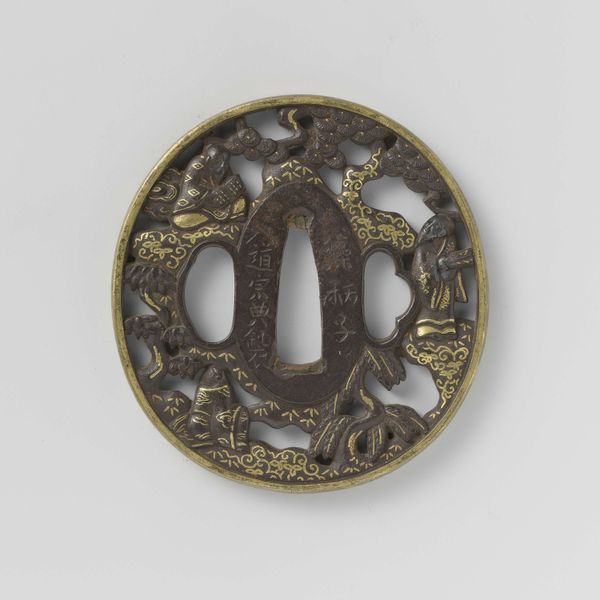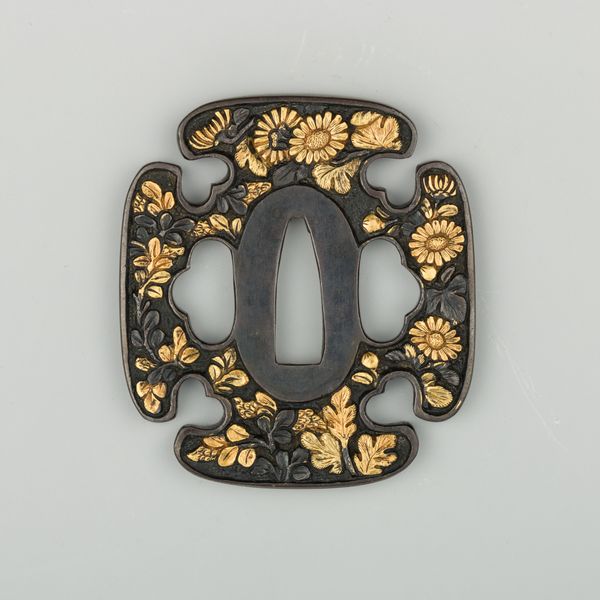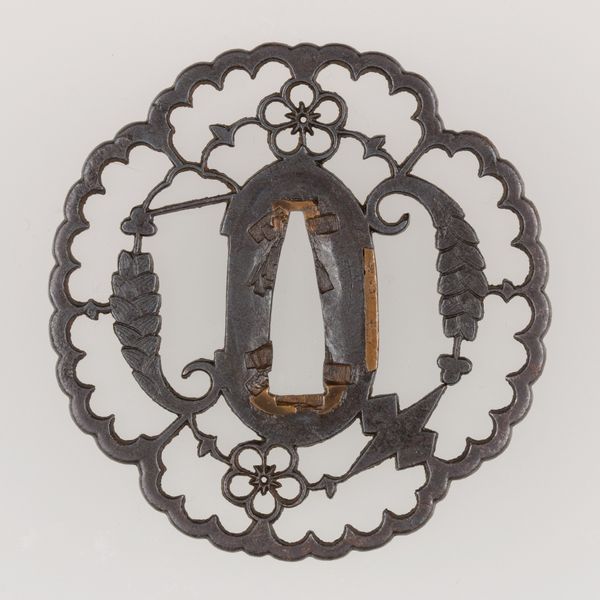
metal, ceramic, sculpture
#
decorative element
#
metal
#
asian-art
#
ceramic
#
flower
#
japan
#
stoneware
#
geometric
#
sculpture
#
ceramic
#
armor
#
decorative-art
#
sword
#
decorative art
Dimensions: Diam. 3 1/8 in. (7.9 cm); thickness 1/8 in. (0.3 cm); Wt. 2 oz. (56.7 g)
Copyright: Public Domain
Editor: Here we have a 16th-century sword guard, or tsuba, by the Hagi school. It's currently housed at the Metropolitan Museum of Art. It seems so delicate, despite being made of metal and functioning as a part of the sword's protective armour. What do you notice when you examine it closely? Curator: Focusing on the visual, one notes the circular shape and its division by floral and vegetal motifs. The negative space created is as integral as the positive, suggesting an interesting play between void and solid. How does the dark metal interplay with this negative space for you? Editor: I think it gives the work a sort of ephemeral, lace-like quality. The detailed floral cutouts contrast sharply with the solid metal of the central opening for the blade. It’s almost like the design is trying to both conceal and reveal. Curator: Precisely. And if you consider that balance further, how might the weight of the solid element inform one's interpretation of the overall piece and its intended function? Think of the interplay of protection and aesthetic expression. Editor: The sword guard must be functional first, as protective armour. But then it becomes something more than the strictly functional: this decorative pattern of positive and negative shapes, of metal and empty space, is beautifully crafted. Curator: It highlights a sophistication of artistic design that enhances utilitarian purposes, wouldn't you agree? Editor: Definitely! Looking closely has revealed so much more than initially met my eye. Curator: Indeed, observing how the composition interacts is central to grasping this intricate piece of decorative art.
Comments
No comments
Be the first to comment and join the conversation on the ultimate creative platform.
